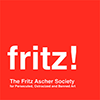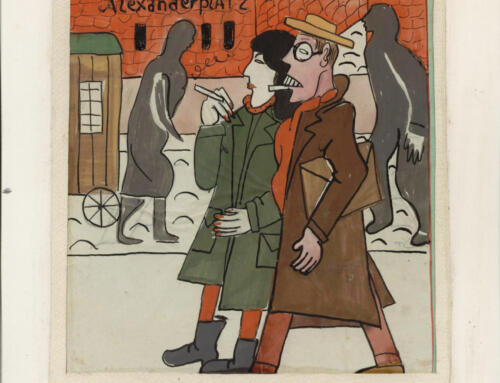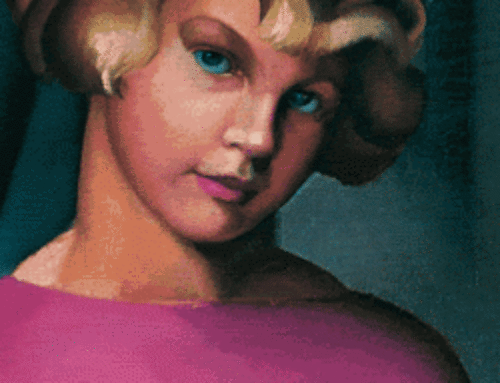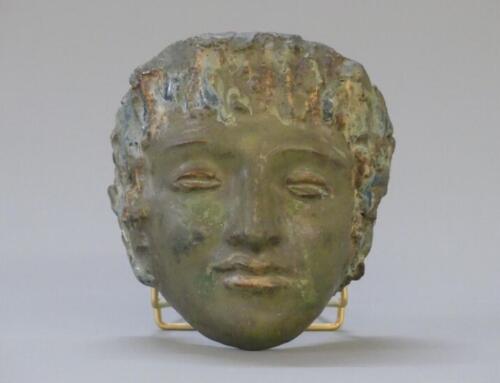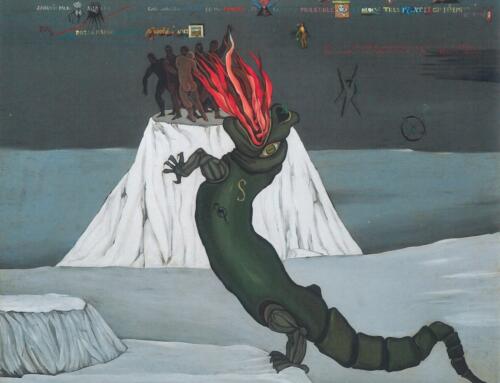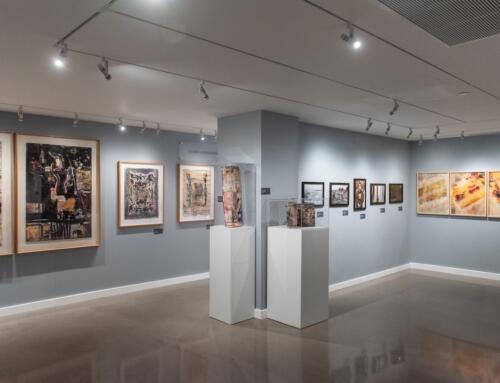Dear Friends,
Spring is here, with the energy of renewal and growth and blossoming trees, plants and flowers. Holidays abound, and we honor Yom HaShoah, Holocaust Remembrance Day.
We have organized fabulous virtual events for you, but first I have a story with a happy ending for you, at least for the art: Pretty exactly a year ago, the reporter and writer Julie Zigoris told the story of artwork that was found on a park bench in San Francisco’s Crane Cove Park in 2022. City employees had rescued the art and found the majority of the artworks to be by the Jewish painter Ary Arcadie Lochakov (1892-1941), a member of the famed School of Paris group that includes the likes of Marc Chagall, Henri Matisse and Chaïm Soutine. Born in Bessarabia (present-day Moldova), Lochakov moved to Paris in 1920 and died there alone in 1941, when the city was under Nazi occupation.
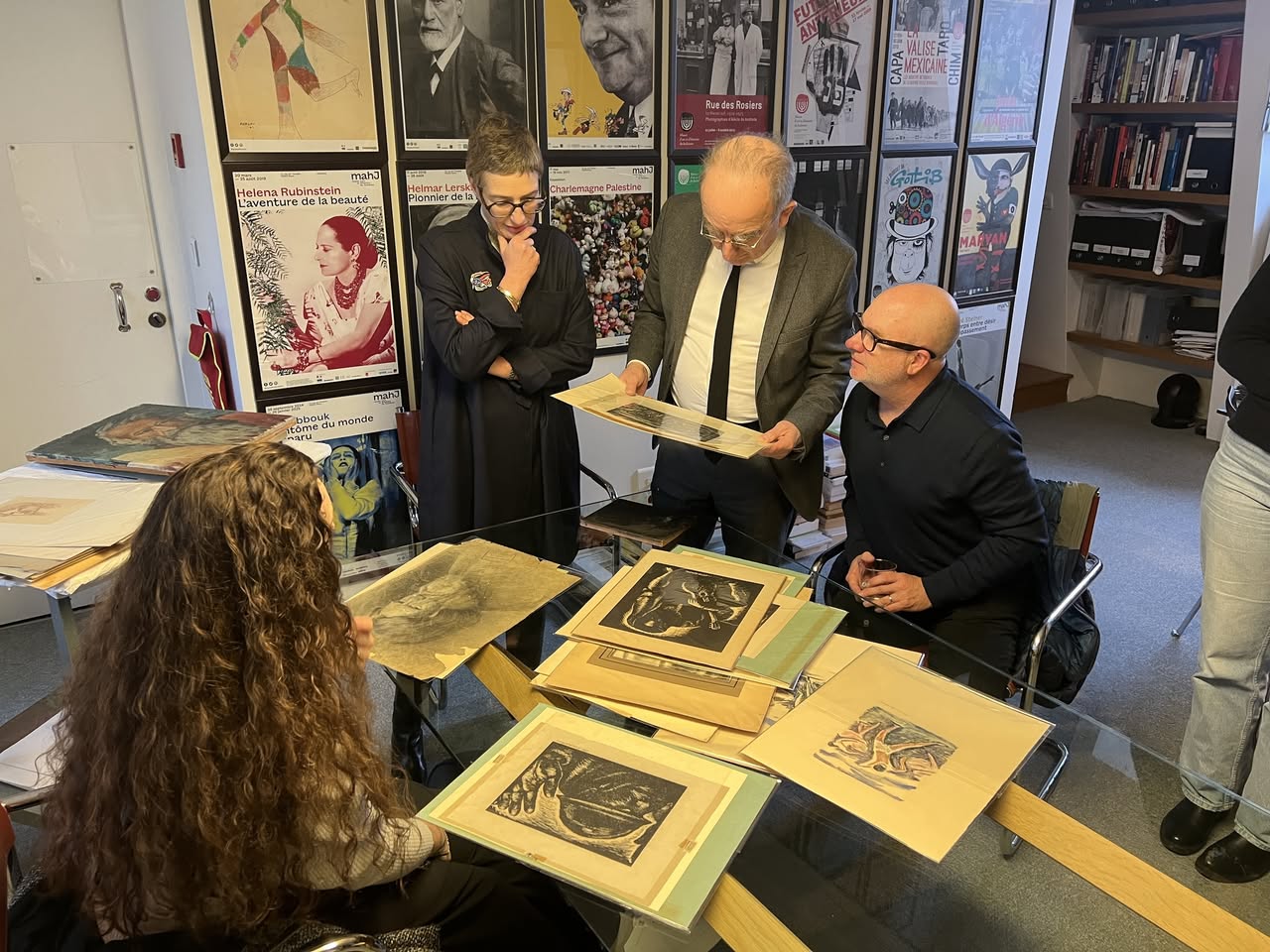
Curators at the Museum of Jewish Art and History in Paris looking at artwok by Lochakov. Photo by Rowan Jack. Courtesy of Julie Zigoris
There are still many unknowns about the whereabouts of the artworks over the years. Most importantly though – thanks to many caring people, especially at the Port of San Francisco – the works were just transferred to the city where they were created and are now part of the permanent collection of the Museum of Jewish Art and History in Paris (mahJ).
Léo Maillet fled to France as well, in 1935. Tune in to see his surviving artwork and hear how he survived persecution:
WEDNESDAY, April 9, 12:00PM EDT
Léo Maillet (1902-1990):
The Broken Mirror
A Presentation by Erik Riedel, Frankfurt (Germany)
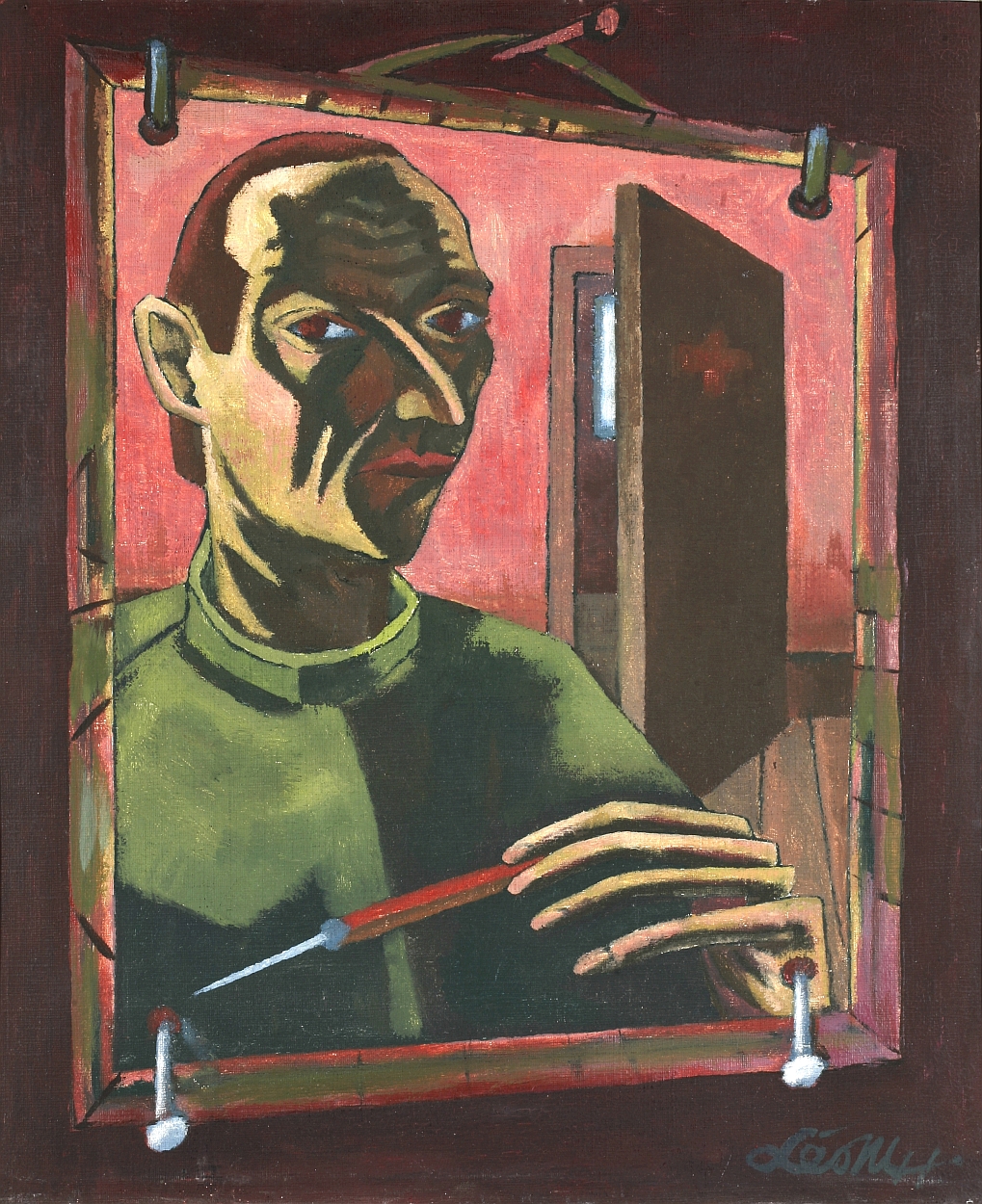
Léo Maillet, Le Graveur (Self-Portrait), 1944. Oil on cardboard. Permanent loan by the Adolf und Luisa Haeuser-Stiftung für Kunst und Kulturpflege. © estate of Léo Maillet: Daniel Maillet and Nikolaus Mayer
Erik Riedel will present the work of the painter and graphic artist Léo Maillet, who changed his original name Leopold Mayer in exile, reflecting the numerous fractures in his biography.
After his dramatic escape from a deportation train bound for Auschwitz, Maillet lived in the French Cévennes under a false identity from 1942 onwards. He painted and drew with the simplest of materials. Some years later, he took up the works he had created during his flight and persecution and transformed them into paintings and etchings. The resulting works are, on the one hand, artistic reflections of his own work and, on the other, confrontations with his own persecution. The fact that Maillet began the latter just a few years after the end of the war is rather unusual. Both among survivors and in the context of the emerging culture of remembrance, intensive processing of the Shoah only began in the late 1970s.
The director of the Berlin Kupferstichkabinett, who submitted an expert opinion for Maillet’s restitution case, stated that although Maillet was completely unknown, he was one of the five great German painters and etchers between 1925 and 1930, alongside Beckmann, Dix, Hofer and Grosz.
Erik Riedel is head of exhibitions at the Jewish Museum Frankfurt and curator of the museum’s Ludwig Meidner Archive. The archive consists of the artistic estates of Ludwig and Else Meidner and several other artists who were forced into exile. Erik Riedel has curated numerous exhibitions on 19th- and 20th-century art, for instance on Moritz Daniel Oppenheim, Ludwig and Else Meidner, Charlotte Salomon, and Arie Goral. Apart from several exhibitions catalogues he has published the catalogue raisonné of Ludwig Meidner’s sketchbooks and the conference proceedings “Ludwig Meidner. Expressionism, Ecstasy, Exile” (2018), as well as the catalogue raisonné of Ludwig Meidner’s paintings until 1927 (2023).
This event is part of the online series “Flight or Fight. stories of artists under repression.”
On Yom HaShoah, Holocaust Remembrance Day, we commemorate the six million Jews murdered in the Holocaust:
THURSDAY, April 24, 12:00PM EDT ONLINE
For I See Old Things Happening Again:
Jill Freedman’s “Missing Generations”
Presentation by Susan Chevlowe, New York
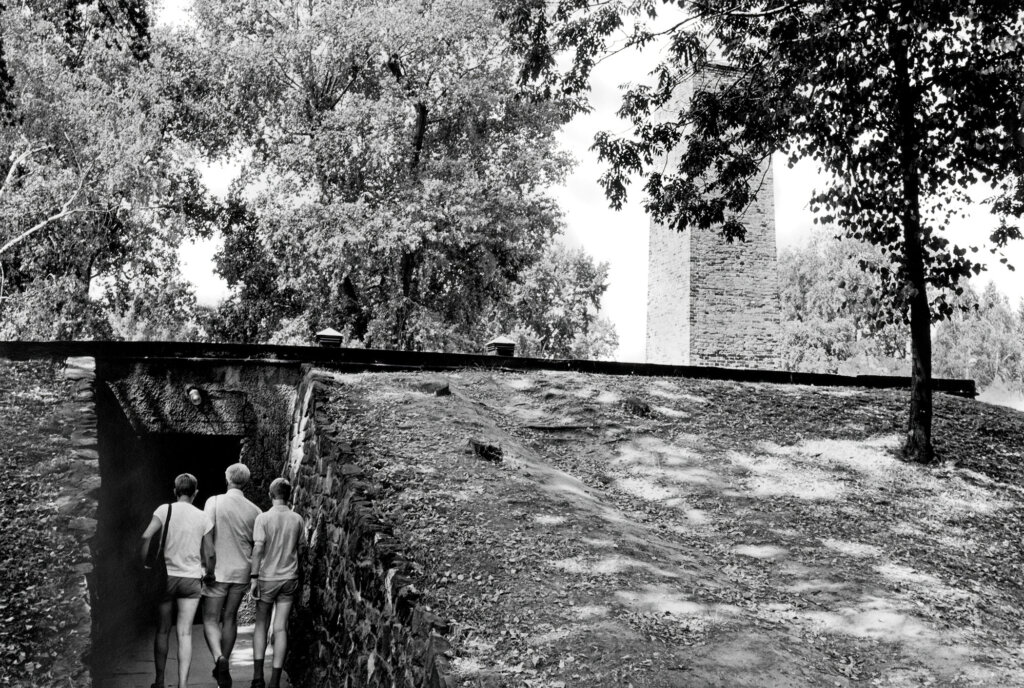
Jill Freedman, Auschwitz 1. Tourist family entering gas chamber, 1994. Gelatin silver print, 8 1/2 x 12 11/16 in. (21.6 x 32.2 cm). © Jill Freedman Family Estate
When the documentary and street photographer Jill Freedman went to Poland in April 1993, on the occasion of the 50th anniversary of the Warsaw Ghetto uprising, she wrote that she made the journey as a pilgrim “to mourn the dead, to honor them,” along with the “survivors, their children, old soldiers and witnesses.” She returned to the sites of destruction again the next year after receiving a fellowship from the Alicia Patterson Foundation (APF), which supports the work of photojournalists. Susan Chevlowe, PhD, will discuss the series of photographs that resulted from these two trips, including to additional sites in Hungary and the Czechia, and the book that Freedman had planned but that was left unrealized at the time of her death.
Susan Chevlowe is Chief Curator and Museum Director of Derfner Judaica Museum + The Art Collection at Hebrew Home at Riverdale, in the Bronx where she has organized solo shows featuring the work of Micaela Amato, Leonard Freed, Jill Freedman, Jonathan Hammer, Robert Katz, Richard McBee, Jill Nathanson, Archie Rand, and many others, as well as group exhibitions. She is a former adjunct assistant professor in the Program in Jewish Art and Visual Culture at the Jewish Theological Seminary, where she also served as co-chair of the Visual Arts Committee of the Arts Advisory Board. Prior to coming to the Derfner, Dr. Chevlowe was an associate curator at the Jewish Museum, New York. Dr. Chevlowe received her Ph.D. in art history from the Graduate Center, CUNY. She is a member of the Jewish Art Salon advisory board and lectures and writes about Jewish art and visual culture.
You can find the recordings of our virtual March events here, to watch, re-watch or pass on to those who might be interested in them:
And we brought the exhibition Survival and Intimations of Immortality: The Art of Alice Lok Cahana, Rabbi Ronnie Cahana, and Kitra Cahana at the Oregon Jewish Museum and Center for Holocaust Education in Portland, Oregon to you, with a virtual event, during which curator Ori Z Soltes and artists Ronnie Cahana and Kitra Cahana shared their insights about the work in the exhibition, how the show was made, and the impact it had, and shared more insight into the remarkable life and work of Holocaust survivor Alice Lok Cahana:
Survival and Intimations of Immortality: The Art of Alice Lok Cahana, Rabbi Ronnie Cahana is a unique and powerful exhibition at the Oregon Jewish Museum and Center for Holocaust Education, which explores the role of art and creativity, bringing the past into the present by focusing on three generations of artists from the same family. Alice Lok Cahana (1929-2017) was a Holocaust survivor who pledged she would become an artist if she survived the war.
The exhibition reveals how the tragedy of the Holocaust impacted multiple generations of a family and how each member transformed the destructive trauma of the Shoah into acts of intense creative accomplishment, taking their own path to provide a through-line to preserving the memories, culture, and identity of their shared family and the Jewish people.
